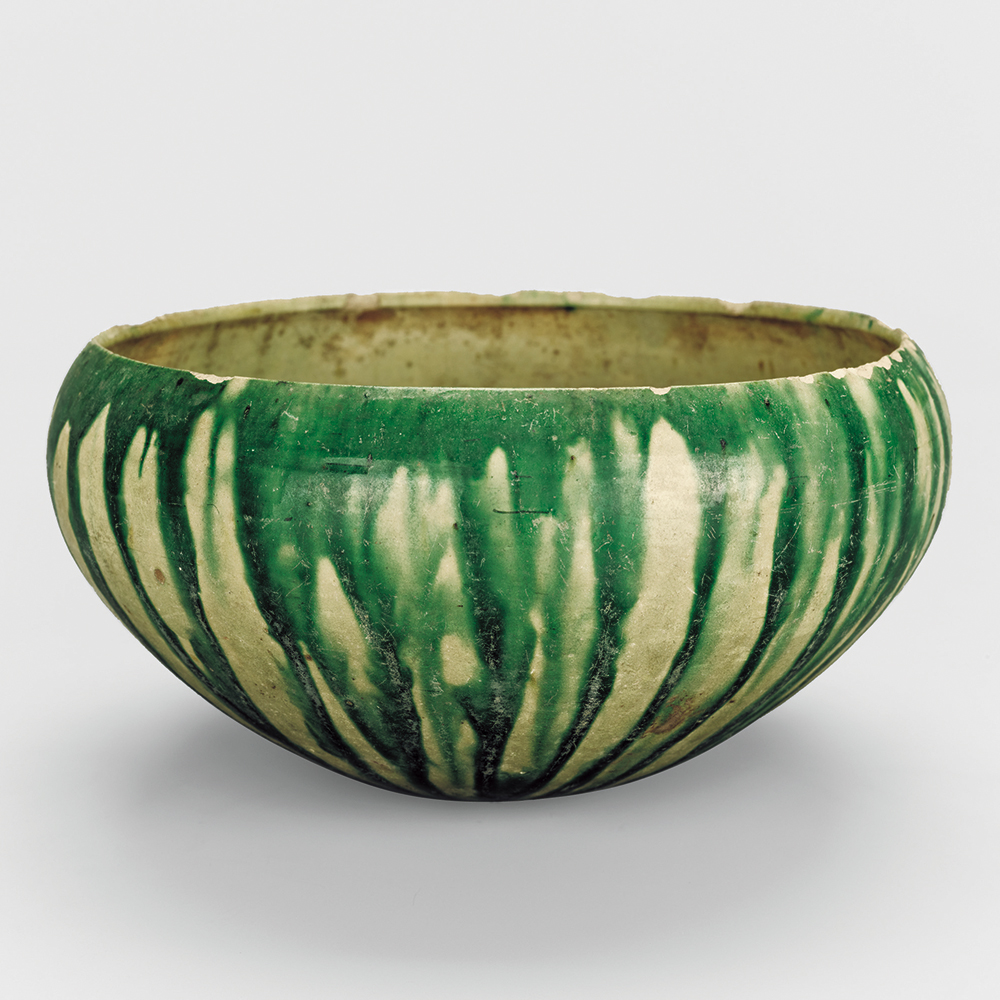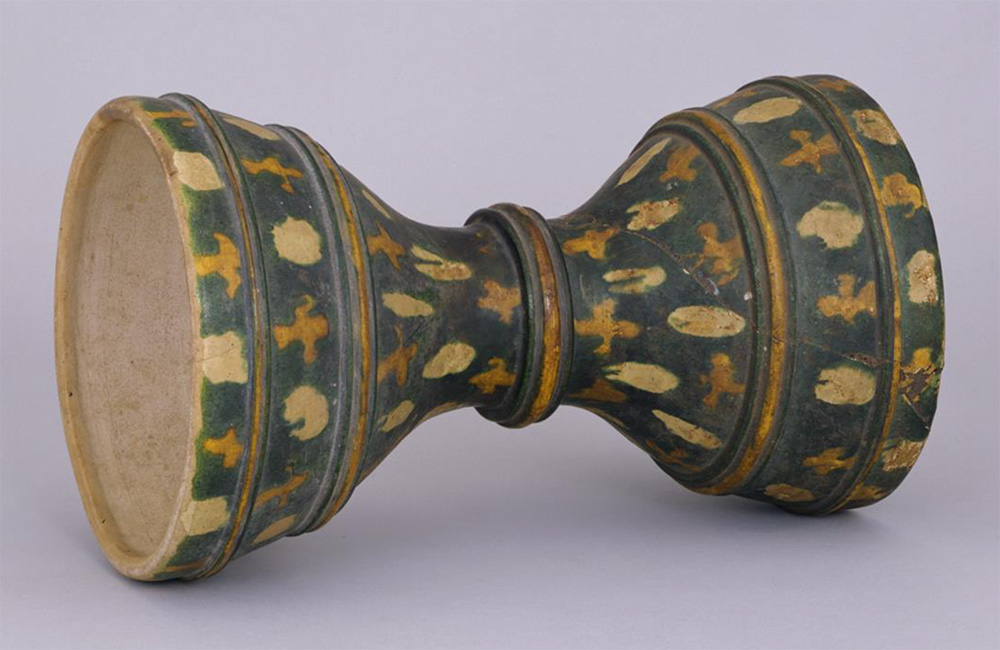三彩(さんさい)sansai
三色の釉薬(ゆうやく)を施した焼物。二色のものは二彩、一色のものは単彩という。古代の三彩には珪酸鉛(けいさんえん)を主成分とする釉薬が用いられ、純粋な珪酸鉛を使用すると白色になり、それに酸化銅・酸化鉄を加えるとそれぞれ緑色・黄色に発色する。なお、正倉院宝物で「磁皿」「磁鉢」等と呼ばれているものは、今日で言う磁器ではなく、陶器に属する。
第75回 正倉院展、2023年
Sansai
Three-colored ceramic ware. This term refers either to wares with any combination of three lead-based glazes—white, green, or yellow—or to any ceramic with multiple glaze colors. The former usage is standard. The best known three-color wares come from Tang dynasty China, but the sixty pieces of sansai in the Shōsō-in were all made domestically and are thus called Nara sansai.
70th Annual Exhibition of Shōsō-in Treasures, 2018

磁鉢 甲1号(南倉9)
Bicolored Ceramic Bowl (South Section 9)
Bicolored Ceramic Bowl (South Section 9)

磁鼓(南倉114)
Tricolor Ceramic Hourgrass-Shaped Drum Body (South Section 114)
Tricolor Ceramic Hourgrass-Shaped Drum Body (South Section 114)


